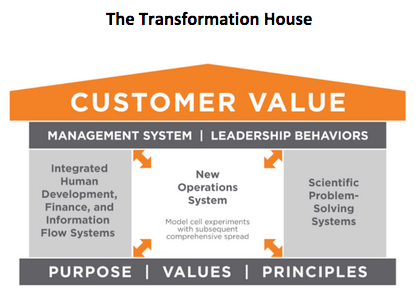One of the foremost figures in the adoption of lean principles in healthcare, John Toussaint, MD, is an executive coach, author and featured speaker around the world. He started Catalysis in 2008, adopting lean methodologies for hospital and health system leaders. Under his direction, the Catalysis team has built C-suite coaching capability and partners with many organizations to advance the idea of healthcare value through delivery redesign using lean, transparency of healthcare performance data, and payment reform.
Studies tell us a common barrier to creating a culture of improvement is the behavior traits leaders themselves exhibit. It’s one of those hand-to-the-forehead moments. Of course, organizations will struggle to improve if their leaders don’t demonstrate the right set of behaviors!
In my work with dozens of healthcare systems and hundreds of healthcare executives, the first question I’m asked is often the same: What are the critical behaviors or traits a leader should focus on in order to positively affect a culture of improvement? My answer always begins with what we at Catalysis call the Transformation House.
In the book Management on the Mend, we use this visual to show leaders how to group the management system elements by their functions and how they tie together and support a culture of improvement.
The Transformation House

- The house rests on a foundation consisting of our underlying Purpose, Values, and Principles.
- The pillars of the house rely on important ancillary systems like Integrated Human Development, Finance, Information Flow Systems, and a Scientific Problem-Solving Systems.
- The rafters of the house are the Management System and Leadership Behaviors. These interact most directly with employees and customer value. They serve as the shelter for more foundational pieces.
- At the center is the New Operations System, which works with the foundation, pillars, and rafters.
- The roof is supported by all the other elements so you can create Customer Value. Like the roof of any house, this focus needs to be maintained to prevent “leaks” in value.
When I speak with healthcare leaders about the importance of behavior change, I do so with this visual in mind. The Transformation House helps leaders understand how the problems they face and behaviors they exhibit impact the systems and activities needed to create a culture of improvement.
We know leaders face a virtually endless list of potential troubles:
- Healthcare’s unstable environment.
- Demands on the healthcare industry are continually harder to meet.
- Senior executive turnover leads to further dysfunction.
- The ill-defined role of the board leads to interference.
- Payment models are in flux based on changing legislation.
- Leaders realize rapid innovation is required, but don’t have the skill set to do it.
Leaders must first figure out what their own unmet needs are in order to improve. When they identify these barriers, they can assess them, address them and work on them to become more effective.
During the course of working with healthcare leaders, we discovered that there are five important behavioral dimensions that consistently underlie the changes leaders must make in order to create and sustain a culture of improvement.
They are:
- Willingness. The key factor enabling personal change, and what drives the cultivation of the other behavioral dimensions, is first recognizing that change is required, which then leads to the willingness to do so.
- Humility. Those who are humble leaders perform better on process and outcome measures.
- Curiosity. Great leaders ask questions. Great organizations hire managers who display curiosity as a priority.
- Perseverance or grit. This trait helps people stay the course. They surround themselves with others who serve as their support network.
- Self-discipline. In order to create a culture of improvement, you must live by leader standard work.
We examine these behaviors in great detail in an article I co-authored in NEJM Catalyst and in a recent webinar produced and hosted by Catalysis.
The big takeaway when it comes to creating a culture of improvement is this: Most leaders start with a set of tools designed to get results. However, many executives responsible for leading teams don’t underpin those tools with important principles. They are unable to sustain the improvement over time because they lack the willingness, humility, perseverance, curiosity, and self-discipline to display these critical leadership behaviors at every turn. With these guiding principles in place, however, great leaders can use their skills to achieve results and sustain progress.
Final thought: If leaders will take time to work on their own shortcomings, and make the right behavioral changes, they will see a dramatic improvement in organizational performance. That’s when the transformation starts to really gain momentum.



Add a Comment